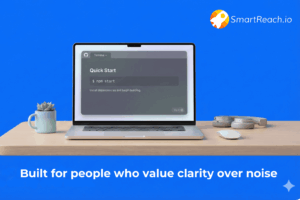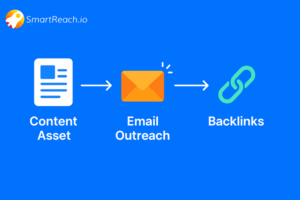Why do inactive subscribers affect email deliverability?
Your prospect list is growing, but your open rates keep slipping.
If you’re running structured outreach campaigns, there’s one silent killer behind the dip in performance: inactive subscribers.
They’re not just sitting idle; they’re quietly wrecking your deliverability and draining pipeline potential.
In this guide, we’ll break down the real, data-backed impact of inactive contacts and why ignoring them could be costing your team qualified leads, productivity, and serious revenue.
What are inactive subscribers and why do they matter?
Inactive subscribers are prospects who haven’t opened, clicked, or replied to your emails in quite a long time, typically 90–180 days.
Say you’ve sent six emails over three months and there’s zero interaction; they’re likely uninterested, outdated, or your emails are hitting spam.
In cold outreach, where executives get nearly 100+ emails daily, providers notice ignored messages fast.
These inactive contacts quietly erode your email sender reputation and weaken the entire outreach system.
Why do inactive subscribers affect my email deliverability?
It’s one of the easiest issues to overlook and one of the most expensive as well.
Let’s break down how this happens, starting with how email providers judge you.
How inbox providers evaluate your sender reputation
Email providers like Gmail and Outlook don’t manually decide where your emails land; they rely on algorithms.
These algorithms look at specific signals to decide whether to put you in the inbox, promotions tab, or spam.
Here are the signals they’re tracking:
- Open rates: A healthy list should see 25–35% in B2B cold outreach. If you’re below 20%, your deliverability is already at risk.
- Click-throughs: Engagement shows relevance. Low clicks = irrelevant content.
- Spam complaints: Even 1 complaint out of 1,000 emails can tank your reputation.
- Bounce rates: Sending to bad or outdated addresses is another red flag.
All of these feed into your sender score, a credibility rating that determines your inbox placement.
Inactive subscribers drag this score down with every ignored email.
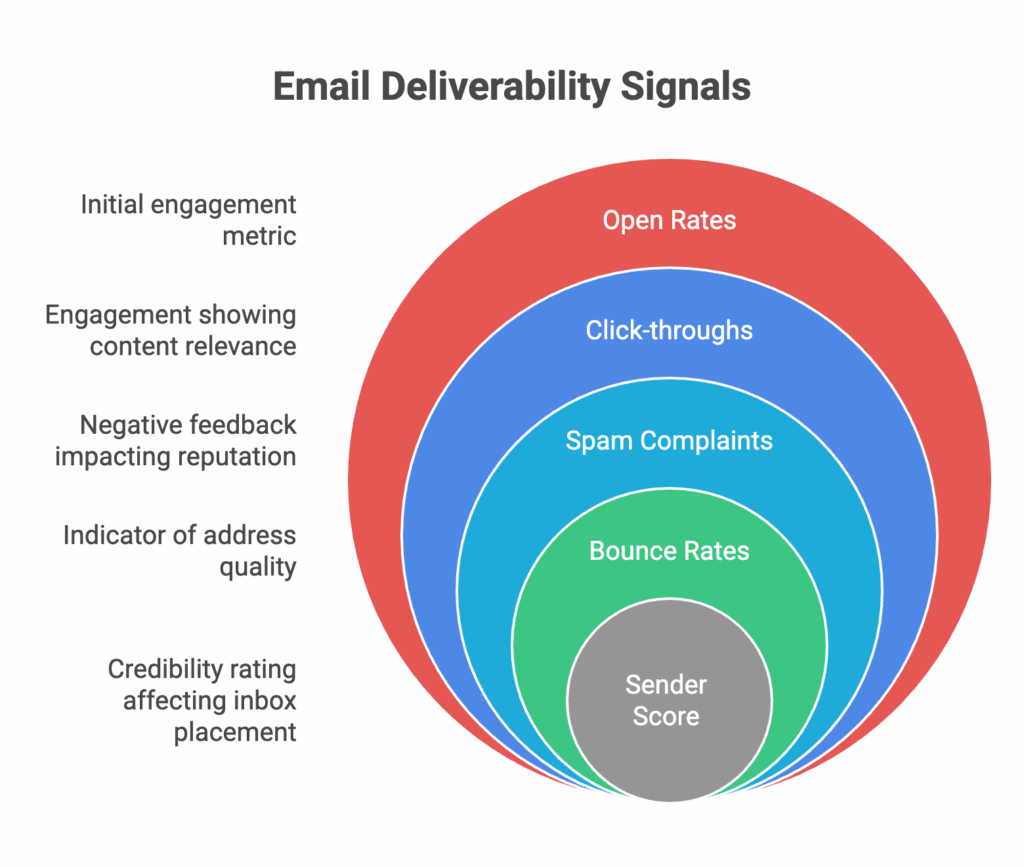
Inactive subscribers pull down your engagement metrics
If a big chunk of your list never opens your emails, your engagement rate drops, and inbox providers use that data to decide whether you’re worth delivering to.
Let’s look at a quick example:
- You have 1,000 prospects
- 300 are engaged (30% open rate)
- 700 are inactive (0% open rate)
Your overall open rate?
Just 9%. That’s a red flag.
Now remove those 700 inactive contacts, and your open rate jumps to 30%, which inbox algorithms reward with better placement and more visibility.
Email filters treat low engagement as spam behavior
Spam filters are built to detect patterns.
And one major red flag?
Sending lots of emails with low or no engagement.
When that happens, here’s what email providers do:
- Trigger warnings: They flag your email domain or IP for scrutiny
- Score drops: Your sender reputation dips, hurting future sends too
- Throttling: They deliver fewer of your emails (e.g., 1,000 sent, only 600 delivered)
- Spam folder placement: Your emails start going to spam, where open rates drop to 2–3%
Even worse, recovery isn’t quick. It takes 6 to 12 months of clean sending to rebuild your reputation.
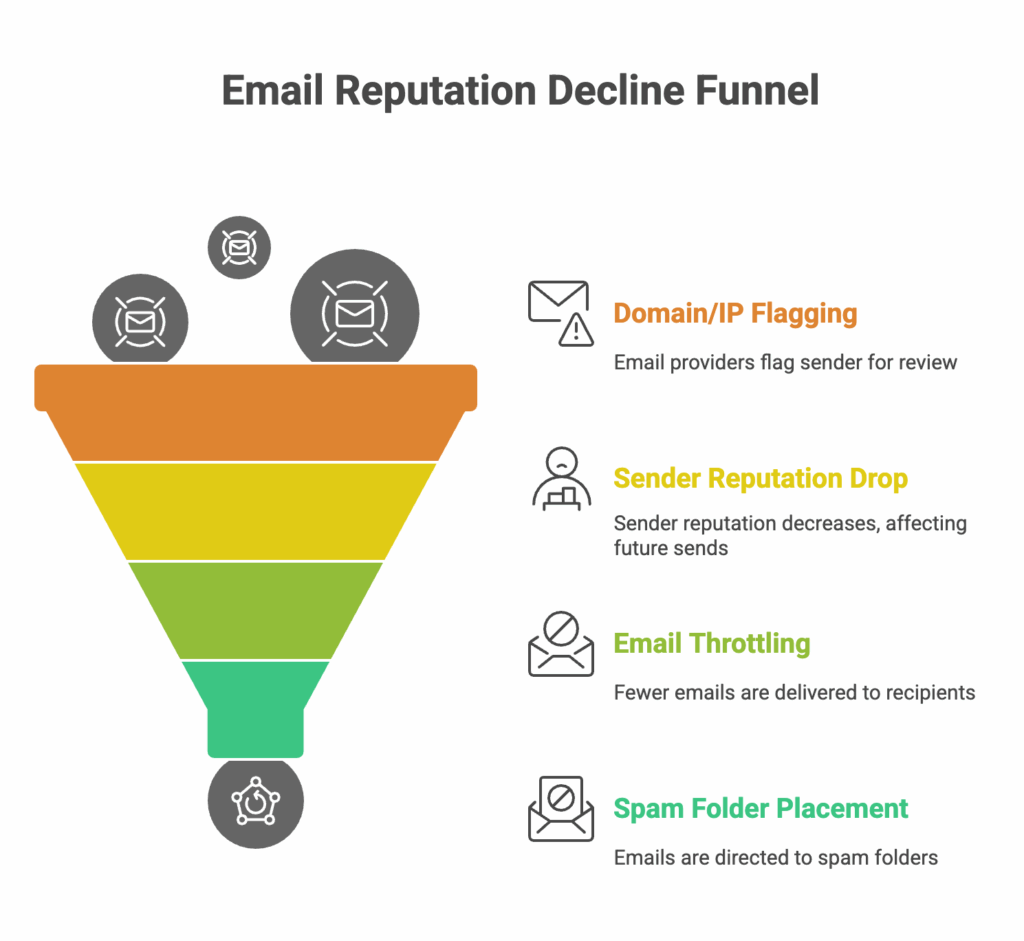
One deliverability issue leads to another
Once deliverability starts to drop, the damage compounds across quarters.
Here’s what that snowball effect looks like:
- Inactive subscribers drag down your open and click rates ⤵️
- Email providers, lower your inbox placement ⤵️
- Even engaged prospects stop seeing your emails ⤵️
- Your sender score tanks ⤵️
- Entire campaigns underperform, forcing a rebuild of your email setup ⤵️
SmartReach.io helps you spot and stop the inactive subscribers early
SmartReach.io is built to help you protect and boost cold email campaign’s email deliverability, right from day 1.
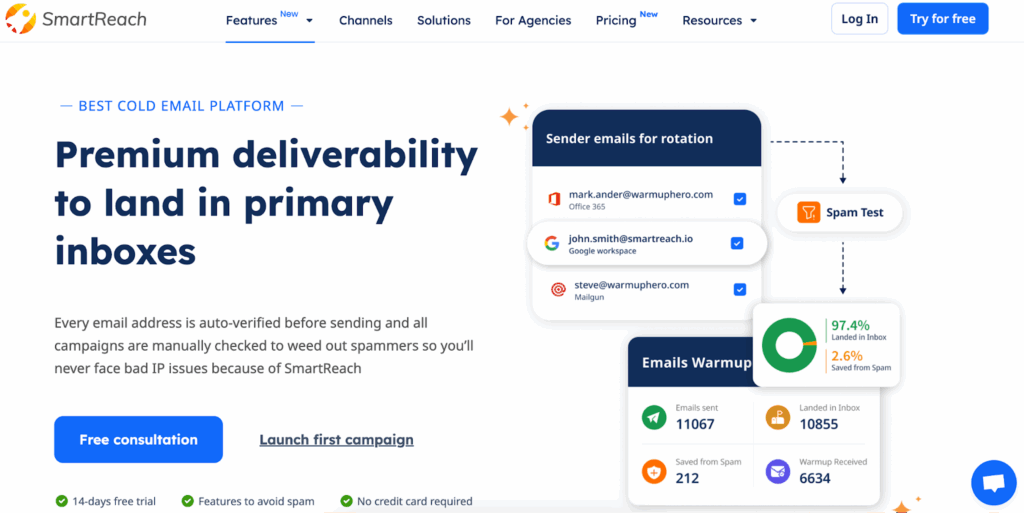
SmartReach’s email deliverability suite is designed to give your emails the best chance of landing in the primary inbox.
It auto-routes emails through the warmest inboxes using smart inbox rotation, pauses campaigns if deliverability dips, and ensures your sending reputation stays intact.
You also get access to domain-level reports and real-time alerts. With built-in warm-up, bounce protection, and advanced deliverability controls, SmartReach takes the guesswork out of cold email outreach and helps you scale it safely.
Top-performing teams use SmartReach because better deliverability doesn’t come from sending more. It comes from sending smarter.
Try SmartReach.io FREE for 14 days. (No credit card required)
How can I handle inactive subscribers to maintain a healthy email list?
Managing inactive subscribers requires a systematic approach to list hygiene.
While the specifics involve multiple strategies like re-engagement campaigns, segmentation, and gradual removal processes, the key is having a clear framework for identifying and handling unengaged contacts.
For a comprehensive guide on exactly how to clean your list and maintain healthy engagement rates, check out our detailed post on handling inactive subscribers to maintain email list health.
This covers everything from setting up automated workflows to determining the right timeline for removing unengaged contacts.
Frequently asked questions
Do unsubscribes affect deliverability?
Unsubscribes have a minimal impact on deliverability compared to spam complaints or bounces. In fact, making it easy for users to unsubscribe is a good practice—it keeps your list clean and improves engagement metrics.
Which type of email is most effective for reengaging inactive subscribers?
A personalized, value-driven re-engagement email works best. Keep it short, remind them why they signed up, and offer something relevant (like a helpful resource or update). SmartReach lets you automate this with targeted sequences.
Which of the following factors directly impact email deliverability?
Open rates, click rates, spam complaints, bounce rates, and sending frequency all affect deliverability. Poor list hygiene and sending irrelevant content to inactive subscribers are also major contributors.
What is an inactive subscriber?
An inactive subscriber is someone who hasn’t opened, clicked, or responded to your emails over a certain period, typically 90 to 180 days. They dilute engagement rates and damage your sender’s reputation.
What’s a common cause of poor deliverability?
Low engagement from inactive subscribers is a major cause. Other issues include high bounce rates, spammy subject lines, unverified sender domains, and sending too many emails in a short span.
What happens if you send an email to an inactive account?
If the account is abandoned or invalid, it can bounce, hurting your sender score. If it’s just unengaged, it lowers your open rate and signals poor content relevance to email providers, which can land you in spam.
What should you avoid doing to grow your email subscriber list?
Avoid buying email lists or adding contacts without consent. These practices lead to low engagement, high complaints, and deliverability issues. Focus on organic list building and permission-based outreach instead.
How to fix email deliverability issues?
Start by cleaning your list, removing inactive and bounced contacts. Set up domain authentication (SPF, DKIM, DMARC), limit daily sending volume, personalize your emails, and use SmartReach’s deliverability tools to monitor performance.
What is the best time to send emails to subscribers?
Send emails during working hours based on the recipient’s time zone. SmartReach’s “Best Time to Send” report shows when your audience is most active, helping you optimize open rates and avoid dead hours.
How long should I wait before marking a subscriber as inactive?
Most email providers consider 90-180 days of non-engagement as the threshold for inactive status, though B2B sales teams should evaluate based on their typical sales cycle length.
What’s a good email open rate for cold outreach?
B2B cold email campaigns should target 25-35% open rates, with anything below 20% indicating potential deliverability issues.
How do I remove inactive subscribers without losing prospects?
Implement a re-engagement sequence first, then systematically remove contacts that don’t respond after 3-4 attempts over 30 days.
Can poor list hygiene affect my entire sales team’s performance?
Yes. Sender reputation is tied to your domain and IP address, so poor practices by one team member can impact deliverability for your entire organization.



